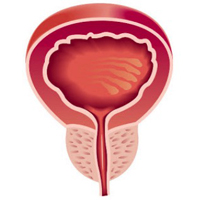Diagnostic accuracy of the Novel 29 MHz micro-ultrasound “ExactVuTM” for the detection of clinically significant prostate cancer: A prospective single institutional study. A step forward in the diagnosis of prostate cancer

All claims expressed in this article are solely those of the authors and do not necessarily represent those of their affiliated organizations, or those of the publisher, the editors and the reviewers. Any product that may be evaluated in this article or claim that may be made by its manufacturer is not guaranteed or endorsed by the publisher.
Authors
Introduction and Objective: ExactVuTM is a real-time micro-ultrasound system which provides, according to the Prostate Risk Identification Using Micro-Ultrasound protocol (PRI-MUS), a 300% higher resolution compared to conventional transrectal ultrasound. To evaluate the performance of ExactVuTM in the detection of Clinically significant Prostate Cancer (CsPCa).
Materials and methods: Patients with Prostate Cancer diagnosed at fusion biopsy were imaged with ExactVuTM. CsPCa was defined as any Gleason Score ≥ 3+4. ExactVuTM examination was considered as positive when PRI-MUS score was ≥ 3. PRI-MUS scoring system was considered as correct when the fusion biopsy was positive for CsPCa. A transrectal fusion biopsy- proven CsPCa was considered as a gold standard. Sensitivity, specificity, positive predictive value (PPV), negative predictive value (NPV) and area under the receiver operator characteristic (ROC) curve (AUC) were calculated.
Results: 57 patients out of 68 (84%) had a csPCa. PRI-MUS score was correctly assessed in 68% of cases. Regarding the detection of CsPCa, ExactVuTM ’s sensitivity, specificity, PPV, and NPV was 68%, 73%, 93%, and 31%, respectively and the AUC was 0.7 (95% CI 0.5-0-8). For detecting CsPCa in the transition/ anterior zone the sensitivity, specificity, PPV, and NPV was 45%, 66%, 83% and 25% respectively ant the AUC was 0.5 (95% CI 0.2-0.9). Accounting only the CsPCa located in the peripheral zone, sensitivity, specificity, PPV, and NPV raised up to 74%, 75%, 94%, 33%, respectively with AUC 0.75 (95% CI 0.5-0-9).
Conclusions: ExactVuTM provides high resolution of the prostatic peripheral zone and could represent a step forward in the detection of CsPCa as a triage tool. Further studies are needed to confirm these promising results.
How to Cite
PAGEPress has chosen to apply the Creative Commons Attribution NonCommercial 4.0 International License (CC BY-NC 4.0) to all manuscripts to be published.

 https://doi.org/10.4081/aiua.2021.2.132
https://doi.org/10.4081/aiua.2021.2.132



